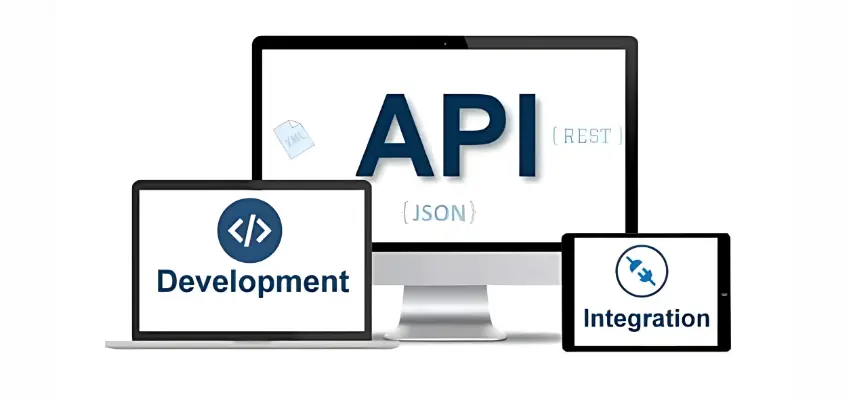What is an API? A Simple Guide for Beginners
Have you noticed how apps like Uber show real-time maps or how you can log in to websites with your Google account? That’s what APIs (Application Programming Interfaces) do. They act as a bridge, allowing different software applications to talk to each other seamlessly. Whether you’re a business in need of custom software development in UAE or a tech enthusiast, understanding APIs can help you utilize smarter digital solutions.
What is an API?
Think of an API as a waiter in a restaurant. You (the customer) place an order, the waiter takes it to the kitchen, and once the food is ready, they bring it back to you. Similarly, APIs allow one software to request information from another and deliver the response efficiently.
How Do APIs Work?
APIs follow a four-step process:
- Request: When you click “Sign in with Google” on a website, it sends a request to Google’s API to verify your login details.
- Processing: The API checks Google’s database to find your credentials.
- Response: Google’s API sends back a response confirming whether your credentials are correct.
- Data Exchange: If valid, you’re logged in instantly. If not, you see an error message.
This behind-the-scenes interaction happens within seconds, ensuring smooth digital experiences.
Types of APIs
Not all APIs work the same way. Based on their architecture and usage, they fall into different categories:
- REST APIs – Most commonly used for web services.
- SOAP APIs – Used for secure data exchange, especially in banking.
- GraphQL APIs – Ideal for fetching specific data efficiently.
- Open/Public APIs – Available for anyone to use.
- Internal/Private APIs – Used within a company for internal operations.
- Partner APIs – Shared between business partners for collaboration.
For businesses looking for custom software development in UAE, choosing the right API type can optimize operations and enhance customer experiences.
How APIs Benefit Businesses in the UAE
With digital transformation on the rise, AI consultants in UAE and IT teams rely on APIs to streamline operations. Here’s why they’re essential:
- Seamless Integrations: APIs allow different software solutions to work together, improving efficiency.
- Better User Experience: Customers get real-time updates, personalized services, and smooth interactions.
- Enhanced Security: With proper authentication methods, APIs ensure safe data exchange.
- Scalability: Businesses can expand their digital ecosystem without starting from scratch.
Whether you’re in e-commerce, healthcare, or fintech, APIs can unlock new opportunities for growth.
7 Steps to API Development
If you’re considering custom software development in UAE, here’s what a successful API development process looks like:
- Understand & Plan: Define the API’s purpose and target users.
- Design & Develop: Choose the right architecture and programming language.
- Test for Performance: Run security and functionality tests.
- Ensure Security: Protect against unauthorized access and cyber threats.
- Write Documentation: Provide clear guidelines for developers and users.
- Deploy for Use: Launch the API for businesses or customers.
- Monitor & Maintain: Keep improving based on user feedback.
For companies offering DevOps services in Dubai, API integration plays a crucial role in automating processes and ensuring faster software delivery.
Final Thoughts
APIs are the backbone of modern software solutions, enabling businesses to innovate and scale effortlessly. Whether you’re working with AI consultants in UAE or investing in custom software development in UAE, leveraging APIs can give you a competitive edge. And if you need smooth API integrations, DevOps services in Dubai can ensure everything runs efficiently.
Need help integrating APIs into your business? Let’s talk!
FAQs
- What is an API in simple terms?
An API is a way for different software to communicate. It helps apps share data and work together. - Why are APIs important?
APIs make apps more useful by connecting them with other services, like maps, payments, or social logins. - What’s an example of an API in daily life?
When you log in to a website using “Sign in with Google,” that’s an API at work. - Are APIs safe to use?
Yes, but only if built with security in mind. Developers use encryption and authentication to keep data safe. - What are the types of APIs?
Common types include REST, SOAP, GraphQL, and Web APIs. They differ in how they handle data. - Can I create my own API?
Yes! Many companies build custom APIs for their apps. If you’re in the UAE, AI consultants and custom software development teams can help.